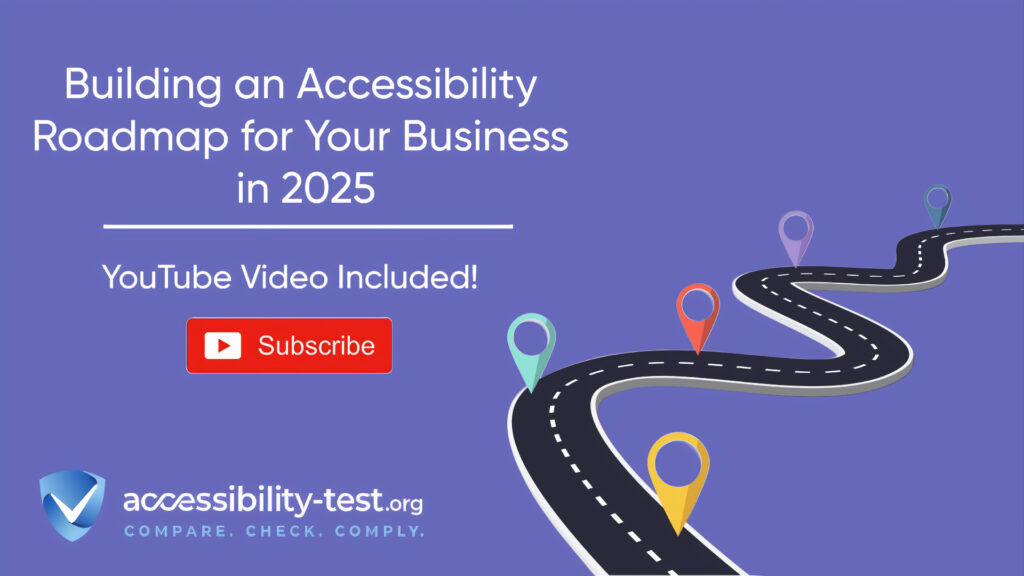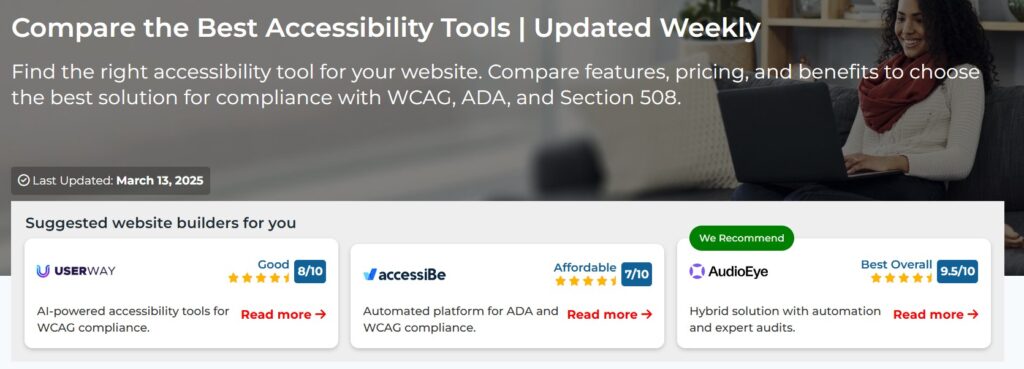
As we move through 2025, website accessibility has become a must for businesses. Currently, 79% of businesses still don’t have clear accessibility plans, which creates both a challenge and an opportunity. This article provides a step-by-step approach to create an accessibility roadmap that will help your business meet legal requirements, reach more customers, and build a better reputation for inclusivity. We’ll walk through assessing your current status, setting clear goals, making needed improvements, and keeping your site accessible over time.
Phase One | Assessing Your Current Accessibility Status
Before you can improve your website’s accessibility, you need to know where you stand. This first step involves checking your site to find problems that might make it hard to use for people with disabilities.
Conducting an Automated and Manual Audit
Finding accessibility issues requires both computer tools and human review. Neither approach works perfectly on its own.
Automated testing is a good place to start. Tools like WAVE, axe, or our accessibility scanner can quickly check your website against basic rules. These tools scan your pages and create reports showing where problems exist. For example, they can find missing alt text on images or forms without proper labels.
“Automated tools typically catch only about 30% of all accessibility issues on a website,” says Sarah Johnson, our lead accessibility tester. “The rest require human judgment to find.”
This is why manual testing matters so much. During a manual audit, a trained person goes through your website using assistive devices like screen readers. They check for issues that machines can’t easily spot, such as:
- Whether content makes sense when read aloud
- If the reading order matches the visual layout
- Whether interactive elements work as expected with a keyboard
- If error messages are helpful and clear
For the most complete picture, you might want to hire an accessibility testing company. These specialists know how to test websites against standards like WCAG 2.2 or ADA requirements.
If budget is tight, start with a basic accessibility scan of your most important pages. Even this limited check will help you find serious issues to fix first.
Identifying High-Priority Issues (e.g., Missing Alt Text, Keyboard Navigation)
After your audit, you’ll likely have a list of many accessibility issues. Not all problems have the same impact, so it’s important to know which ones to fix first.
The most important issues typically include:
- Missing alt text for images: Screen readers can’t explain pictures unless you provide text descriptions. Every meaningful image needs alt text that clearly describes what it shows.
- Keyboard navigation problems: Many people with motor disabilities can’t use a mouse. They move through websites using only a keyboard. Can someone tab through all parts of your site? Is there a visible outline showing which element is selected?
- Poor color contrast: Text that doesn’t stand out from its background is hard for people with low vision to read. Your site should have strong contrast between text and background colors.
- Form issues: Online forms often cause problems for screen reader users. Each field needs a proper label, and error messages must clearly connect to the fields they refer to.
- Missing headings and structure: Proper headings (H1, H2, H3) help screen reader users understand and navigate your content. Your pages should use these headings in a logical order.
- Videos without captions: People who are deaf or hard of hearing need captions to understand video content. All videos should include accurate captions.
Mark McDonald, accessibility expert at Digital Access Now, explains: “Fixing these core issues often resolves the problems that block the most users. Start with barriers that completely prevent someone from using a feature, rather than minor annoyances.”
By focusing on these high-impact issues first, you can make your site much more usable while you work on other improvements.
Phase Two | Defining Goals and Milestones
With a clear picture of your current accessibility status, it’s time to set specific goals. This phase helps you create a realistic plan with clear targets and the resources needed to reach them.
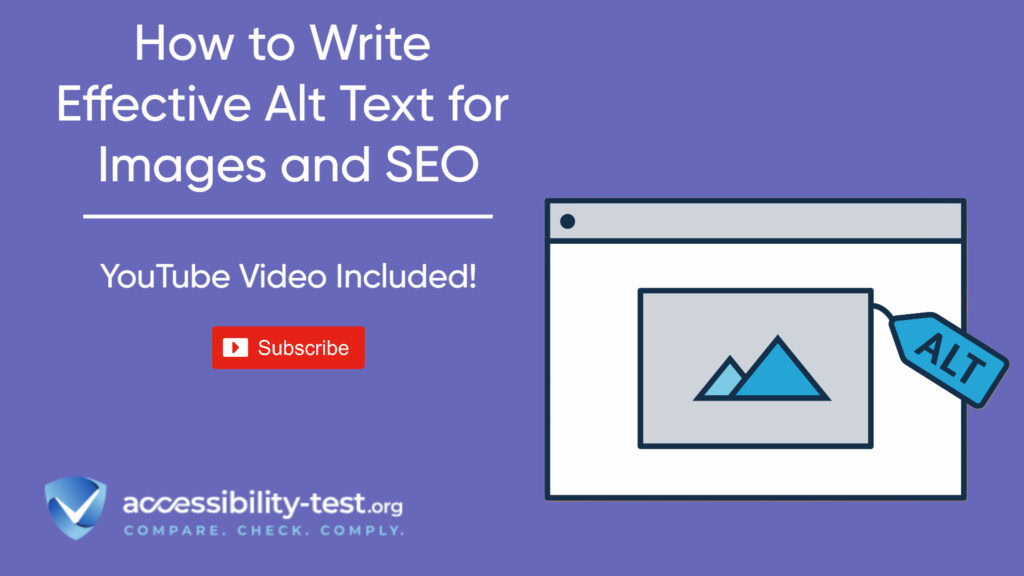
Setting Compliance Targets (e.g., WCAG 2.2 AA)
First, decide which accessibility standards you want to meet. This decision shapes all your future work, so it’s important to choose standards that match your business needs and legal requirements.
Most organizations aim to follow the Web Content Accessibility Guidelines (WCAG) 2.2 at the AA level. This level balances strong accessibility with practical implementation. WCAG 2.2 covers issues like:
- Making content viewable for users with vision disabilities
- Ensuring your website works for people using various input methods
- Making content clear through simple language and predictable behavior
- Creating robust content that works with many technologies
Your business might also need to follow specific laws depending on your location and industry:
- In the United States, the Americans with Disabilities Act (ADA) applies to many businesses. While the ADA doesn’t list specific technical rules, courts often use WCAG as a standard in lawsuits.
- Section 508 rules apply to federal agencies and their contractors. These updated standards refer to WCAG 2.0 AA.
- The European Union has created the European Accessibility Act (EAA) with requirements that businesses must meet.
- Many other countries have their own digital accessibility laws with different requirements.
When setting your targets, consider creating a step-by-step approach with deadlines:
- Short-term goal (3-6 months): Fix critical issues that block users
- Mid-term goal (6-12 months): Reach basic compliance with chosen standards
- Long-term goal (12-18 months): Achieve full compliance and make accessibility part of all processes
Document these goals with specific dates in your roadmap. Having clear targets will help keep momentum and measure success.
Allocating Budget and Resources for Accessibility Projects
Making your website accessible requires both money and staff time. Good planning for these resources is key to success.
When planning your budget, think about these potential costs:
- Audit and testing: Initial accessibility audits can range from a few hundred dollars for automated testing to several thousand for full manual assessments.
- Fixing issues: The cost to fix problems varies based on your site’s complexity. Simple fixes like adding alt text might be handled by your team, while complex issues may require developer time.
- Training: Your team needs skills to maintain accessibility. Budget for training for developers, designers, content creators, and testers.
- Tools and services: Consider ongoing costs for accessibility monitoring services or testing tools your team will use.
- Outside help: You might need accessibility consulting or specialized developers for complex issues.
To determine the right resource allocation, ask:
- Who on your team will lead accessibility efforts?
- Do you need to hire specialists or can you train existing staff?
- Will you use your own developers for fixes or hire outside help?
- How much content needs updating, and who will do this work?
For many businesses, a mixed approach works best: train your own teams to handle ongoing accessibility while using outside experts for complex assessments and difficult technical fixes.
Your budget should also include extra funds for unexpected issues. Accessibility projects often uncover more problems as they progress. Having flexible resources allows you to address these challenges without delaying your timeline.
When presenting your budget to leaders, highlight both the legal risks of not complying and the business benefits of accessibility. Sites that are accessible often have better usability for all users, improved search rankings, and access to larger markets.
Phase Three | Implementing Accessibility Improvements
With your assessment complete and goals defined, it’s time to start making changes. This phase focuses on the practical steps to improve your website and build accessibility thinking into your team’s work habits.
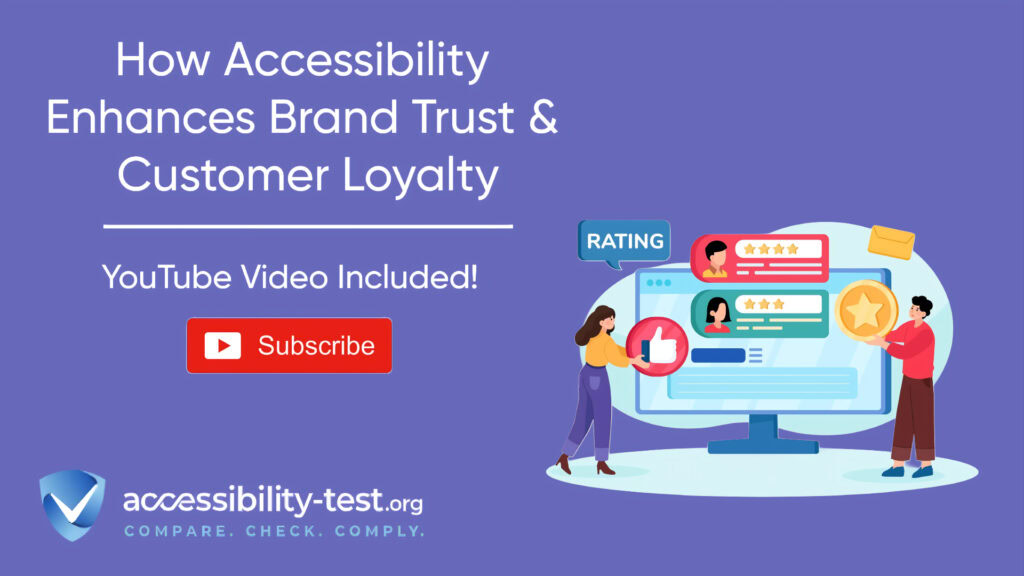
Integrating Accessibility into Agile Development Sprints
For most web development teams, accessibility works best when it’s part of regular development cycles rather than a separate project. By adding accessibility into your existing Agile sprints, you can make steady progress without disrupting your team’s workflow.
Here’s how to make accessibility part of your Agile process:
- Add accessibility user stories to your backlog. For example: “As a screen reader user, I want proper form labels so I can fill out forms independently.”
- Include accessibility requirements for all new features. Before any feature is considered “done,” it should meet relevant accessibility standards.
- Assign realistic time estimates for accessibility tasks. Early on, these tasks may take longer as your team builds skills.
- Create accessibility champions within each team. These team members take special interest in accessibility and help review work.
- Test for accessibility during each sprint, not just at the end of projects. This catches issues early when they’re easier to fix.
- Use team meetings to discuss accessibility challenges and improve your process.
When deciding which fixes to work on first, consider starting with:
- High-traffic pages like your homepage, product pages, and checkout process
- Features that directly impact sales or key user journeys
- Issues that cause complete barriers rather than minor inconveniences
For teams new to accessibility, focus on making new features accessible while gradually fixing existing content. This prevents creating new problems while you address older issues.
Remember that perfect accessibility doesn’t happen overnight. By making it part of your regular development cycle, you’ll see steady improvement while building good habits.
Training Teams on Inclusive Design Principles
For long-term accessibility success, your entire team needs to understand the basics of inclusive design. Training should go beyond just teaching technical requirements—it should help team members understand why accessibility matters and how it benefits everyone.
Good accessibility training programs typically include:
- Awareness training for all staff to build understanding of disability issues. This might include trying out assistive technologies or hearing from people with disabilities about their web experiences.
- Role-specific technical training:
- Developers learn about proper HTML, ARIA attributes, and keyboard interactions
- Designers study color contrast, text sizing, and flexible layouts
- Content creators practice writing clear headings, descriptive links, and plain language
- Testers learn to use accessibility testing tools and checkers
- Hands-on workshops where teams can immediately apply what they’ve learned to real projects.
- Regular updates as standards change and team members need to refresh their skills.
Training resources include:
- Online courses about web accessibility
- Webinars and virtual workshops
- In-person training sessions
- Documentation and reference materials for your team
After training, support continued learning by:
- Creating an accessibility resource library with guidelines for your organization
- Setting up regular meetings to discuss accessibility challenges
- Establishing mentoring between team members
- Encouraging certification in accessibility for interested staff members
As team members gain expertise, you’ll see accessibility becoming a natural part of everyone’s work rather than an extra burden. This change in thinking is essential for lasting accessibility practices.
“The most successful companies make accessibility everyone’s job, not just something the accessibility team handles,” notes Michael Rivera, accessibility consultant. “When designers, developers, and content creators all understand their role in creating accessible experiences, the whole process becomes more efficient.”
To measure if your training is working, track metrics like:
- Fewer accessibility issues in new features
- Faster fixing of accessibility problems
- Increased confidence reported by team members in surveys
Remember that building expertise takes time. Plan for ongoing training rather than one-time sessions, and celebrate progress as your team develops their accessibility skills.
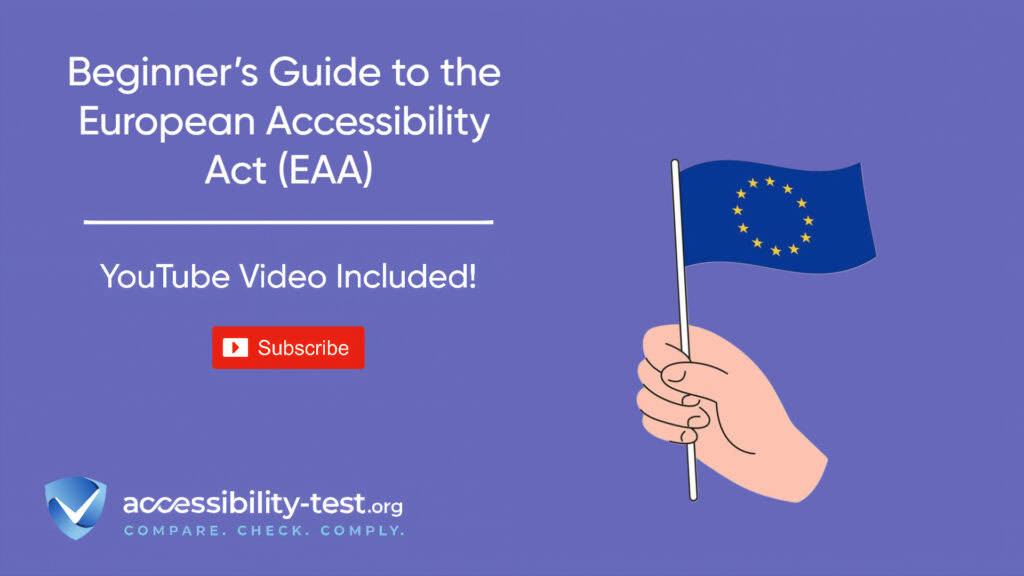
Phase Four | Monitoring and Maintaining Compliance
Achieving accessibility is not a one-time project—it requires ongoing attention to maintain compliance as your website changes. This final phase focuses on keeping your site accessible for the long term.
Using Continuous Monitoring Tools for Ongoing Checks
Once you’ve improved your site’s accessibility, you need systems to prevent future issues. Continuous monitoring tools can automatically check your website regularly, alerting you to new problems before they impact users.
Here’s how to implement effective monitoring:
- Choose accessibility monitoring services that fit your needs. Options range from simple tools that scan a few pages to full solutions that monitor your entire site.
- Set up regular automated scans—daily for busy sites or weekly for smaller sites. This creates an early warning system for accessibility issues.
- Create dashboards to track accessibility metrics over time. Look for patterns rather than just individual issues. Is accessibility improving overall? Are certain types of problems happening repeatedly?
- Add accessibility checkers to your development environment and content management system. These tools can flag potential issues as content is being created, preventing problems before they reach your live site.
- Set up alerts for critical accessibility failures. Your team should be notified immediately if important user paths become inaccessible.
- Add regular manual checks to your automated monitoring. Have team members regularly test key workflows using keyboards only or screen readers to catch issues automated tools might miss.
Remember that monitoring tools can’t catch everything. They’re good for finding technical violations like missing alt text or poor color contrast, but they can’t fully assess the actual experience for people with disabilities.
For complete monitoring, consider combining:
- Automated scanning tools
- Manual testing by your team
- Ways for users to report accessibility issues
- Regular expert reviews by accessibility consultants
When accessibility issues are found, have a clear process for deciding which to fix first. Not all issues have the same impact—focus first on problems that prevent users from completing important tasks.
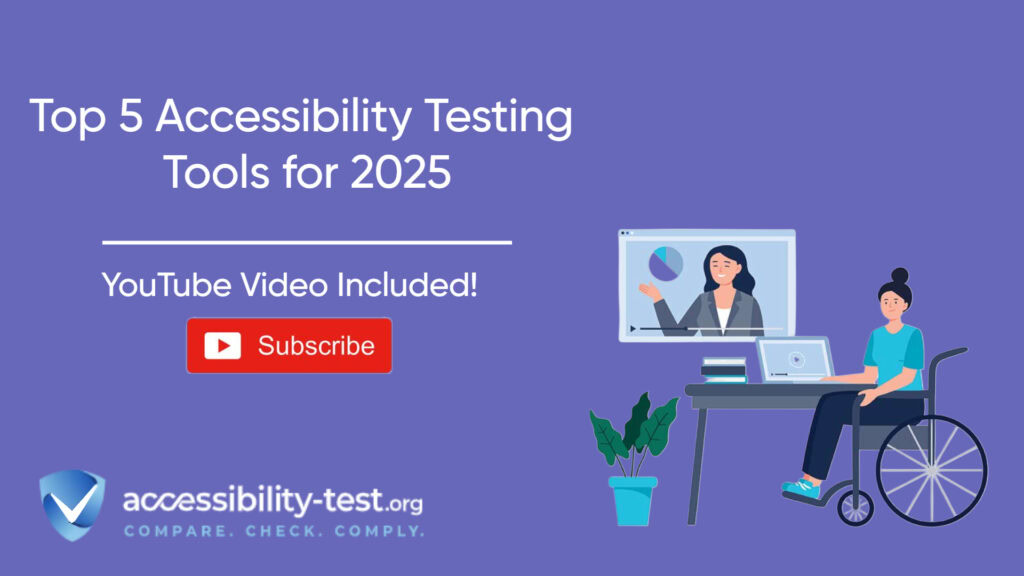
Scheduling Regular Audits to Stay Ahead of Legal Changes
Accessibility standards and legal requirements continue to change. Regular audits help ensure your site stays compliant with current standards and prepares for upcoming changes.
Create an audit schedule based on your site’s complexity and how often it changes:
- Conduct full-site accessibility audits once a year. These thorough reviews should check compliance with current standards and identify areas for improvement.
- Schedule focused audits after major site updates or redesigns. Don’t wait for your yearly review if you’ve made significant changes to your website.
- Plan targeted reviews whenever accessibility standards are updated. For example, when WCAG 2.2 was released, sites needed to check compliance with the new requirements.
- Include legal review as part of your audit process. Have someone watch for changes to accessibility laws that might affect your business.
- Document all audit findings and fix plans. This documentation shows your good faith efforts toward accessibility, which can be important in legal situations.
Beyond just finding problems, use audits as chances to improve your accessibility processes:
- Look for patterns in recurring issues to identify gaps in your workflows
- Review how well your accessibility training is working
- Check whether your testing procedures are catching issues early enough
- Update your internal accessibility guidelines based on what you learn
To stay informed about legal and standards changes:
- Join accessibility-focused organizations and mailing lists
- Follow accessibility experts on social media
- Attend webinars and conferences about digital accessibility
- Consider working with an accessibility consulting firm that provides updates on regulations
By maintaining a proactive audit schedule, you’ll not only stay compliant with current requirements but also be better prepared to adapt to new standards as they emerge.
Visit Our Tools Comparison Page!
Creating an accessibility roadmap is a smart business move that delivers benefits beyond just meeting legal requirements. By following the four phases outlined in this article—assessment, planning, implementation, and monitoring—you can systematically improve your website’s accessibility while managing resources effectively.
Remember that accessibility is not just about compliance; it’s about creating better experiences for all users. When you design and build with accessibility in mind, everyone benefits from clearer content, more intuitive interfaces, and more flexible ways to interact with your site.
The journey to full accessibility is ongoing, but each step you take improves the experience for people with disabilities and strengthens your business. By starting with high-impact issues and gradually building accessibility into your processes, you can make steady progress toward a fully inclusive website.
As legal requirements around accessibility continue to evolve, having a clear roadmap puts you ahead of the 79% of businesses that lack proper planning. This forward-thinking approach not only reduces legal risk but positions your organization as an inclusive leader in your industry.
Run a FREE scan to check compliance and get recommendations to reduce risks of lawsuits
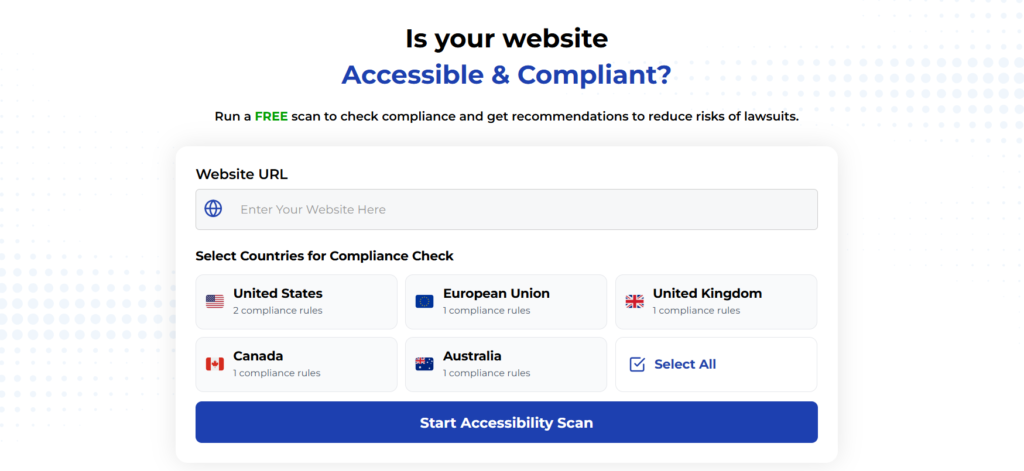
Don’t wait to take action—audit your site’s SEO-accessibility health today with our free tool! Identify gaps, implement fixes, and ensure compliance with the latest guidelines to dominate SERPs while creating an inclusive experience for all users. Take the first step toward accessibility success now!



